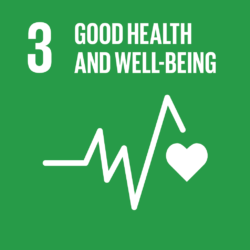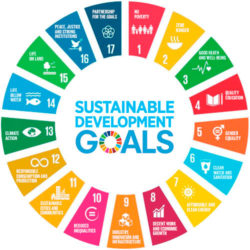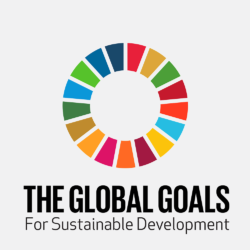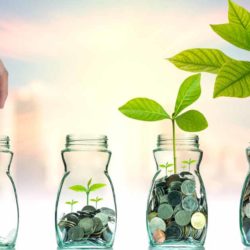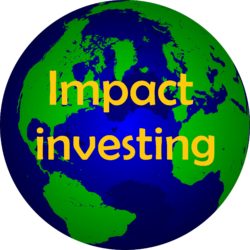The Purpose of Health Care Reform

It’s now 2020. Noting the 10-year distance between now and the deadline for the 2030 Sustainable Development Goals the United Nations (UN) has declared that this decade needs to be the “Decade of Action.”
The World Health Organization (WHO) recently released its list of this decade’s urgent health priorities. Many of these directly link into the SDGs.
We have 10 years to save our health and our planet.
This is an area in which purposeful work will prove to be invaluable. We need our best and brightest uncovering the routes to take to save the health of the planet and the people.
One of the most obvious examples of something affecting both our and the planet’s health is air and water pollution.
Across the globe more and more people are suffering from conditions brought on by contaminated air and lack of clean water. Millions are dying because of this exposure and that number will only rise as our pollution levels get worse.
So how do we fix our air?
Finding the best way to do this is proving to be an international endeavor as innovators from across the globe are coming forth with potential solutions.
This year will see the culmination of the NRG COSIA Carbon XPRIZE (carbon.xprize.org), a global competition that was set up to bring forth new breakthroughs and technologies that will reduce the planet’s CO2 levels.
Meanwhile, there are carbon capture facilities being run across the world (including four in Canada), pulling in more than 30 megatonnes of CO2 a year. Sadly, this is hardly a drop in the bucket.
This work is so very important and purposeful. Breathing is obviously a fundamental need and clean air should not be something we blow off as a problem for future generations to solve.
Let’s hope we uncover a solution.
Another vital area to look at is how do we reach the unreachable?
Billions are suffering in conflict zones, dealing with terrors no one should face for reasons beyond their control.
What can we do to ensure they still have access to health care, a vital service we so quickly take for granted?
Groups like Doctors Without Borders and CARE International are good examples of what we need to be doing and the impact purposeful work can have.
We need to find ways to ensure everyone has access to health care. It’s the best way to ensure we have a fair and just world.
Of course this inequality is seen in other areas as well. Poverty and income inequality are both leading to health problems across the globe, as people can’t afford medical access for reasons like social status and race.
One solution to this is the Health in all Policies (HiaP) approach. This is a method that has been used with great success before.
HiaP requires all areas of government to consider the health implications of their policies. Introducing this requirement reduces inequality levels because representatives start looking at the long-term effects of their policies and actions and seek out solutions that level out the playing field.
This is without a doubt purposeful work.
Access to medication is another area of health care that falls under the umbrella of purposeful work.
If you live in Canada and have a quality drug plan (and stable health) you may not be aware of how uneven drug access is. The truth, however, is that access to medication is erratic and unequal even though international law deems it part of our right to health.
According to the World Health Organization (WHO) approximately 30% of the world’s population do not have access to the treatment they need.
Brilliant and caring minds are looking for solutions.
The Access to Medicine Foundation, for example, is working with pharmaceutical companies to increase access in low- and middle-income countries. The National Pharmaceutical Council (npcnow.org) is exploring how to increase access in the U.S.
In Canada, of course, you have the ongoing move towards a Pharmacare system. The work being done to create a system that increase and equalize drug access is vital for the health of Canadians. As it stands, though, the regulation changes will lead to far fewer drugs being allowed into our health system. Groups like the Canadian Organization for Rare Disorders are working to ensure this problem is seen and amended before it’s too late.
Helping people access the meds they need to survive and thrive is obviously purposeful and important. Let’s hope these groups make an impact.
Health care is wonderful and needed. It is not, however, perfected as of yet.
So many areas across the globe need highlighting and fine-tuning in order to ensure everyone’s needs are met and good health is shared by all.
The people putting in the legwork and the mind work to uncover solutions deserve all our praise and gratitude.
Supporting Tomorrow’s Leaders the Canadian Way

There is often a worry concerning the world we are leaving behind for our children (and our children’s children). I think this is why I have come to support the Sustainable Development Goals, as this is the best way to ensure future generations enjoy the comforts of life and the planet that we ourselves got to have.
The question then becomes what can we do to ensure the next generations are properly set up? Looking at Generation Z (and beyond) what steps should we be taking to make sure these kids are raised right? We in Canada have been blessed with many advantages and I know we can find the right way to ensure the next generation will be ready to raise the SDGs to the next level.
Let’s look at what we need to do.
Interestingly enough, it will likely be easier for our children to follow the SDGs and the changes made to meet these goals than it is for us. Their youth means they are not as stuck in their ways or used to a certain routine and so changes made for the betterment of the planet won’t be as jarring for them.
Using the school system to introduce them to the SDGs is an excellent idea—and is being done across the country—but potentially this is a concept that can be introduced earlier than it currently is.
The good news is there are resources for educators wanting to impart this vital environmental message on the younger generation. The Global Schools Program and the Sustainable Development Solutions Network (SDSN) SDG Academy both offer excellent information and courses to help pass on the vital information. There is also the World’s Largest Lesson, a fantastic resource for educators looking to add the SDGs to their lesson plans.
There are so many benefits that will come from educating our youth (and ourselves) on the issues and potential of the SDGs. These are the leaders of tomorrow and we want to make sure they have the facts and information they’ll need to conquer the monster that is climate change.
Once we get them educated the next step is to get our youth involved.
Much has been written on the importance of volunteering, with studies finding it improves physical and psychological health and volunteer work serving as a stepping stone in people’s career paths.
Getting Generation Z et al involved in the SDGs will not be a hard endeavor, as this generation truly believes in the concept of equality and wants to do its part to better the world.
Enter Generation SDG – Youth Action on the SDGs. This federally created initiative is working with our youth to help them launch and participate in volunteer projects that are working towards the successful completion of the SDGs.
Specifically, SDG Ambassadors are being given the tools and resources to develop solutions to pressing issues in their community and then will be working with their peers to enact these solutions.
This is an amazing initiative and I can’t wait to see what solutions Generation Z and Generation SDG bring forth.
Obviously Generation Z is going to need different types and levels of support when it comes to their growth and education. The good news is this support is coming forth.
Take Scotiabank for example. The company recognizes the importance of providing opportunities and support to the youth of today and created the Young People in the Community (YPC) Index to help determine how the company can best direct its resources to provide the optimum support to the youth of the Americas.
Working with Enactus Canada the bank has presented the Scotiabank Youth Empowerment Challenge, giving tomorrow’s innovators and entrepreneurs the chance to show their potential, hone their craft and win prize money all at the same time.
We want Generation Z to live up to their potential and it’s great to see a Canadian financial institution doing what it can to help.
It can be terrible to think about the world we are leaving to our children. Rather than wallowing in guilt, though, we need to do everything we can to ensure they have the knowledge, tools and access to continue the fight to save the planet.
There is a lot of power and potential coming forward in Generation Z. Just look at the recent climate march and the millions of youth that stood up and made their voices heard. These kids will bring forth innovations and solutions we never would have thought of. I’m looking forward to seeing it.
The Crises of Capitalism, Discord & Climate Change

Thanks to issues like climate change, pollution, overpopulation and urban sprawl we are steadily increasing the harm inflicted on the planet and damaging our future potential on the planet.
The alarm has been raised and great minds across the globe are brainstorming for ways to save our present and our future.
But will we be successful? In truth there are major hurdles that need to be passed if we want to save the planet.
Capitalism has a long enough history that no one alive in North America can really imagine any other system serving as society’s base. In truth, though, capitalism is far from ideal and the system itself is not helping our attempts to create a cleaner and greener world for future generations.
This, unfortunately, is not something anyone in power wants to hear. Naturally anyone speaking out against capitalism is painted by the powerful as hysterical, illogical and (in a misuse of the term) “socialist.”
The truth is the capitalist pursuit of wealth at any cost is one of the major reasons we are currently standing at this dangerous crossroads. The health of the planet and the health of humanity is being seen as a secondary concern and profit is being held as the ultimate goal.
I am far from the only person to raise this alarm. Experts across the globe have raised their voices, trying to enact change before it’s too late. The problem is we are up against a system that is so fully entrenched in our society it makes our voices and our plans seem futile.
So what do we do?
As Greta Thunberg put it, “If solutions within this system are so difficult to find then maybe we should change the system itself”.
We can do this. If enough people rise up against the profit-first mentality of our times we can force a revolution and bring in a greener future.
Another major roadblock we have is a lack of worldwide unity in the fight. We all need to lower our emissions to prevent passing the climate point of no return. Unfortunately, certain areas are not as ready to join the fight.
According to the ESCAP Asia and the Pacific SDG Progress Report this region is set to miss every one of the UN’s SDG targets. When you consider that this region holds over 50% of the Earth’s population this is incredibly disheartening news.
The issue, of course, is not as clear cut as it seems unfortunately.
As this area of the world sees an increase in wealth its residents in turn consume more. This is a double-edged sword that has been looked at by many leading the climate fight. Can we tell people they don’t get to enjoy the advantages we took to raise our standard of life because new information has shown its detrimental effects?
The good news is there is still time and there are things Asia-Pacific can do to steer themselves in a better direction. Acts like increasing environmental protections and properly investing in sustainable development will make a huge difference both to the lives of people living in that region and to those living across the globe.
Let’s hope the coming months see more SDG progress across the globe.
The 2030 Agenda and the Sustainable Development Goals are very important aims we need to see through. Unfortunately there are things standing in our way and we need to learn how to surpass these issues in order to complete our goal and save the planet.
We can do this because we have to do this. It’s time to shift the system and do what needs to be done to protect our world.
How We Reach Environmental Sustainability

The second pillar of sustainability is likely the one you’d think of first when you think of sustainability.
Environmental sustainability is a concept we need to embrace and perfect, as this is how we maintain the health of our planet and ensure there will still be a planet for future generations to come.
Humans haven’t been super great in this regard but we still have the potential to turn things around and make the right choices to ensure the planet remains healthy. We just have to create and follow the right chain.
So what do we do?
The most obvious thing is work harder to protect our natural resources. Sustainable Development Goals 15 and 16 look at the importance of protecting life below water and life on land and these are two goals intrinsically tied to environmental sustainability.
There are incredible groups working hard to find solutions. Take the Nature Conservancy for example. This initiative works all across the globe, helping countries and communities protect their natural resources. Whether it’s by buying land, creating water funds or working with the government to change policy this amazing team is making a real positive change.
The next thing to do is take a good look at our energy sources. To achieve environmental sustainability we need to derive our energy from renewable sources.
For some parts of the world this won’t be too hard a task. Hydropower is already the main source of electricity in Canada and China, Brazil and the U.S. rely heavily on its power as well.
Samoa has also been working towards a greater shift to sustainable energy, starting up hydro projects to help move the country away from a reliance on diesel.
Reliance on solar power is also growing and the global solar energy storage market is set to grow over 63% by 2023.
This is fantastic to see. Now we just need to find a clean replacement for crude oil.
We also need to ensure that our businesses and economy are acting in an environmentally sustainable way.
For businesses, this requires them to act and do business in a way that limits their footprint as much as possible.
Although this may seem like an impossible battle, the economic benefits that can come from moving your business into eco-friendly territory may win over even the hardest capitalists.
This is why so many major names have taken on the quest to position themselves as green warriors, turning to sustainable energy and supplies (IKEA), switching up their packaging (Unilever), reducing their employees’ commuting time (Panasonic) and working in smart buildings (IBM).
With the Millennials and Generation Y now firmly established in the business world and eco-concerns ranking high on the list of importance in these age groups we can expect that more businesses will be open to operating sustainably.
Let’s make sure they have what they need to go down this route.
Finally we need to ensure our society is environmentally sustainable.
This may seem complicated, but all it really means is we all go about our day to day lives in an environmentally sustainable way. Seemingly small steps like producing and eating local food, following the three Rs (reduce, reuse, recycle), taking public transit or carpooling can help in the quest to create a sustainable planet.
Once this societal shift happens the entire chain will be strong enough to make a positive impact. We need that if we want there to be a healthy planet for our descendants.
Funding the SDGs

Sustainability is vital for our survival. At the same time, we need true innovation to ensure our needs are met and everyone is willing to embrace the sustainability wave.
The question, of course, is how do we ensure these innovators have the support they need?
There are funding options available for people working towards the creation of a marketplace that best answers the call of the Sustainable Development Goals (SDGs).
Let’s look at some options.
The good news is governments and major corporations recognize the importance of developing SDG initiatives and many are offering grants to help innovators fund their plans.
Canada, for one, is offering the Sustainable Development Goals Funding Program for 2019-2020, a system designed to promote and increase Canada’s involvement in the 2030 Agenda.
The World Bank has also offered its support, launching the World Bank Group Partnership Fund for the Sustainable Development Goals (WBG SDG Fund). Aiming to help initiatives across the globe the fund is supporting ventures the world desperately needs (like reducing income inequality and better supporting refugees).
These bodies hold a lot of power and it’s excellent to see them doing something positive with that power.
A second way to support SDGs is through the continued development of development finance institutions. These government-backed institutions offer both public- and private-funded financial support to initiatives aiming to improve conditions in developing and underdeveloped economies.
The United States both offers DFIs to support overseas development and development in their own backyard.
The Community Development Financial Institutions Fund (CDFI Fund) aims to support the poorest communities in the United States, combining both federal and private financing to provide opportunity to the disadvantaged.
Last year the US combined its major DFIs (Overseas Private Investment Corporation and the U.S. Agency for International Development’s Development Credit Authority) and the Overseas Private Investment Corporation to create the U.S. International Development Finance Corporation. This new funding powerhouse will offer support to initiatives aiming to improve life in developing nations.
Canada, sadly, was very late in joining this game and only opened its DFI—FinDev Canada—in 2018. This initiative aims to use private financing to fund businesses in poverty-stricken areas and intends to put a strong focus on businesses run by women and youth.
These DFIs are a great avenue for entrepreneurs seeking to make a real difference.
A third route is a venture that might seem to risk-adverse or hassling for many people, yet remains a viable option.
Crowdfunding and impact investing have exploded the past few years and this route can serve as a great way for innovative entrepreneurs to fund their life-changing startup or business.
Understanding the importance of SDG businesses and the potential available in crowdfunding new initiatives have set up to connect SDG innovators with potential investors.
Take SDG Market for example. This initiative connects SDG startups and businesses with potential investors, providing an alternate funding route for those seeking to save our planet.
Both sides (entrepreneurs and investors) are properly vetted before gaining access to the platform, ensuring a sense of security for anyone involved in the process.
As both crowdfunding and impact investing grow in popularity and power it’s only logical to explore the funding potential in this field.
If we fail at meeting the SDGs it is likely the end for our species and the planet. As such, we need to be doing everything in our power to support initiatives that are aiming to find solutions.
The good news is countries, businesses and people are stepping up to the plate to offer their support. Let’s hope the team effort leads to a better tomorrow.
We Need Sustainability & Innovation Now

We’ve been on this planet for a really long time now. We’ve seen countless civilizations and empires rise and fall and been witness and part of amazing breakthroughs in art, finance, health, politics and so many other areas. We’ve developed languages to communicate and give voice to our ideas.
And now it’s all at risk.
We want to survive. We want our words and works to pass on and we want our children and children’s children to live in a world that’s safe and ready for exploration. So what do we do? What concepts do we need to pass on to continue humanity?
Innovation and sustainability may be the most important concepts for humanity to embrace if we want to continue surviving and thriving on this planet. These concepts, properly explored, will give us the power we need to survive on this earth as it continues to react to our presence.
Let’s look first at innovation.
Innovation is a key part of growth. It is what brings forth new ideas and helps fix existing problems. Innovation brought us our breakthroughs in everything from food (agriculture) to health (medicine) to entertainment (TVs).
The problem comes in when people decide it is better and safer to stay with the old (“tried and true”) system. Fear of change and the negative elements that could come from exploring a new idea can result in society existing in a rut.
This, of course, becomes a major issue when the “tried and true” system is in fact causing major damage. This is the issue we currently find ourselves in when it comes to the planet and climate change. So much of what we use to live and maintain our society and marketplace is increasing our footprint. Of course, no one wants to give up modern advantages.
Innovation is what will heal the wound. Innovation is the only way we will be able to maintain any of our modern advantages while limiting climate change.
Great minds are on the case and are fixing issues like agriculture (Beyond Meat), air quality (Carbon Engineering, Sidewalk Labs) and power (General Fusion). General Fusion, a safe and clean update of nuclear energy, is a perfect example of why innovation is direly important.
Sustainability is another concept that needs our attention now. We need to keep our environment from depleting any further and a sustainable mindset will help us towards this goal.
Sustainable development is now front and centre in the marketplace as smart businesses and entrepreneurs recognize its importance and potential. We may have a long way to go before our issues surrounding poverty, hunger, health, education, gender equality and climate change are fully addressed and solved but today’s startups are being developed by entrepreneurs eager to make a positive impact.
You can see proof of this in Young Sustainable Impact, a global initiative determined to do as much good as possible by helping young entrepreneurs find the solutions we need. Its Innovation Program is designed to bring the startups and entrepreneurs through the creation process and its graduates are bringing us needed upgrades like Xyla Water.
With the right minds looking for solutions we may be able to stave off disaster.
Innovation and sustainability: Both abstract terms but also concepts that must be mastered and, when combined, potentially the thing that will save us.
The Smog Free Tower is a fantastic example of what can be done when these two concepts are brought together. This structure (or “smog vacuum cleaner”) draws in and cleans polluted air and has already purified millions of cubic metres of air in major cities.
Even better, in Beijing the collected air particles are compressed and transformed into jewelry that people can buy from Studio Roosegarde.
Being able to clean air and create new elements out of it is an amazing and fascinating sustainable innovation. It is also a breakthrough we definitely need.
Humans can do great things when we put our minds to it and we know how to clean up problems. We need to ensure innovation and sustainability are brought together to create new ways to save our world.
This is not something we can put off or leave for our grandchildren to figure out. Let’s work together to find the sustainable innovations we need to survive. Are you ready?
How Climate Change Is Changing the Marketplace

Climate change is a major crisis and the ideal solution is still being sought out.
This is one of the issues right at the forefront of the SDGs. In fact, sustainable development goal 13 is “Take urgent action to combat climate change and its impacts.”
Climate change impacts us all and can seriously harm our economic development, prosperity, justice, health and society.
What is being done? Across the globe both governments and independent groups are working to find solutions.
Sustainable development has an incredible amount of potential in it. Properly harnessed it will lead to truly healthy economies and a healthy planet. Obviously this is a solution that should be supported by the majority of society.
A major part of successfully implementing sustainable development and tackling climate change is getting the business world on board. How to go about this and what has already been done is what I will look at this week.
Whether you are aware of it or not, sustainable development is already a part of the business world. When the UN released the 2030 Agenda for Sustainable Development, laying out the steps needed to fight climate change, extreme poverty and inequality, they stressed the need for businesses to play their part. Canada adopted the agenda in 2015 and the goals of the agenda have been impacting the market ever since.
The good news (for the planet) is sustainable development is proving to be imperative for success in the modern and future marketplace. Consumers in today’s market are becoming savvier when it comes to social justice and sustainability and choosing to ignore this vital area will prove to be a death sentence for companies as awareness grows.
Modern businesses need to show their green base if they want to maintain a positive image in the marketplace.
Of course that may not matter if you don’t have the money to keep the startup running.
The business world runs on money and even the noblest causes need financing.
Green bonds are one of the ways financing is being directed towards sustainable development. This funding initiative is also one of the ways we can fight climate change. With investment funds going towards startups and businesses that have a positive environmental impact these initiatives have a real chance to create the change we desperately need.
The good news is it’s a growing market. 2018 is expected to reach $250-300 billion, almost double 2017’s levels ($155 billion).
Smart entrepreneurs see the potential in this market and set out to make a difference by helping investors invest their money in the right green initiative.
This is what CoPower is doing. The investment team is set up to help people get access to green bonds and then monitor its progress. For people just discovering the market who are very interested in the field but unsure about the logistics and returns this is a great way to safely invest in green bonds.
Climate change is a real (and pressing) issue. If it’s not taken seriously it may seal our doom. Green bonds, if embraced by the market, could prove to help us live another day.
Blockchain is proving to be a major ace in humanity’s sleeve when it comes to tackling climate change. The technology, when properly used, can help in myriad ways, from powering microgrids to managing our shrinking water supply. But perhaps its most direct link to climate change can be seen in its connection to carbon credits.
Carbon credits or offsets are a slightly controversial concept, but their ability to get major corporations involved in environmentalism and the war on climate change needs to be noted. They may prove to be the best way to keep our emissions below catastrophic levels while providing a sense of equalization to the parts of the world that did not have as big a role in climate change.
How does blockchain play in? Innovators are looking at the potential that exists in the tokenization of carbon credits. This new use of cryptocurrency technology would radically improve the process of carbon credit trading, which is currently time consuming and expensive.
Veridium, for example, has created an “environmental and social impact token” called VERDE and is creating an app called the VERDEPAY that will allow users to track their carbon footprint and convert purchases into positive environmental impacts.
Reducing emissions is imperative if we want to limit the effects of climate change and this method of tokenizing carbon credits will likely prove to improve the process and bring more players on board.
Technology may be our saving grace when it comes to saving the planet and our society. The business world knows this and is doing all it can to use technology to the best of its ability. Sustainable development, gold bonds, blockchain, these are all very important when it comes to protecting our world.
The environmental market is set to change the business world. Billions of dollars are being funneled into innovations that will change the world. I can’t think of a better use of our money.
Why Social Impact Investing Is the New Venture Capital

Venture capital is a major section of the investment market, managing large amounts of money and deals. Last year it reached a new high of US$155 billion. With such success and attention it’s only natural that people are looking for its next step or its role in “the next big thing.”
The most logical successor? The most common opinion is that social impact investing is the new venture capital. Combining the need to make a positive impact with the quest for financial returns, social impact investing has the real opportunity to overhaul the venture capital market and turn the movement into a global game changer.
Why is the investment market shifting this way? That’s what we’ll look at this week.
So, why is social impact investing the new venture capital? There are several reasons. The first reason: Social impact investing is an improved version of investment.
Venture capitalism, to be blunt, is all about the money. Your backers are offering financing because the return is beneficial to them.
This is a bleak view of the world and a depressing way to finance a business.
Social Impact investing, in contrast, offers a much more hopeful approach. Yes, the financial backers provide support with the expectation that there will be a positive return for them, but the “real reason” they offer funding is the positive impact the company is set to make.
Investing with a purpose means your money is doing more. By financially supporting social impact causes you are making the world a better place and improving your portfolio.
One of the major reasons for the increased interest in social impact investing is the rise of the millennial.
Millennials are now the major force driving the market and their dollars do the talking. This is also the generation that brought forth Occupy Wall Street and had their careers delayed due to the 2008 recession. They do not trust boardroom financing.
Highly socially conscious, this generation doesn’t just want to grow their nest egg: they want to know their investments made a positive impact. In fact, a Morgan Stanley study found that 86% state an interest in sustainable investing.
This is a very large section of the investment market and is comprised of the people gaining more control over the business world. Their interests show where the market is going.
Smart investment firms see this and are catering to this area. Startups like Aspiration offer sustainable, socially-conscious investing, tapping into the market while helping to make a better world.
You may wonder why we haven’t made this power shift before. Well, when it comes down to it, the environment wasn’t set up for the shift until recently.
The market of yesterday limited who could invest in companies, which reduced the reach social impact causes had and made it harder for startups to get funding and wannabe philanthropists to supply funding.
Both the U.S. and Canada have seen the changing of the market, however, and have amended their laws and regulations to allow more funding opportunities.
These changes have opened up the field of investing to a wider audience, and this in turn is changing how startups are marketing themselves to potential investors.
Once the environment was amended to allow for social impact investing the response was very positive and the field is now growing at astonishing levels. In 2017 the impact investing market reached $114 billion in assets and this was doubled to $228 billion in 2018.
With the increased levels of interest and financing it’s easy to see why impact investing is now getting so much attention. This is amazing to see and I look forward to seeing what innovations come forth from the next crop of impact investing innovators.
Heraclitus, a Greek philosopher, once said that, “Change is the only constant in life” and the market and business world reflect this fact. As society evolves our way of handling everyday realities changes.
Technology has had a radical impact on our lives and is obviously remaking how we manage our businesses. Its impact is a positive thing and the changes it is bringing with it are improving the business world and opening it up to sections of the market that previously had limited access.
Venture capital is a great way to fund a business, but it should not be the only way to fund a business as not all entrepreneurs can access this passageway. Thankfully FinTech is opening new doors and today’s social investing startups now have access to technology that will help them get the funding they need.
Impact Investing Meets Big Data

Last week we look at the amazing advancements being made thanks to the team up of impact investing and artificial intelligence. This is not the only partnership impact investing needs if it wants to dominate the market.
Big data. A game-changer when it comes to data collection and properly using said data. Big data research and analytics have changed and are changing how we work with information.
Impact investing, if it really wants to make the strongest impact it can, needs a partnership with big data in order to ensure the right information is getting through and the right choices are being made.
This week we’ll look at why this team up needs to happen.
Impact investing is important. If you don’t know this you should. The world is unequal and crises abound and nothing is going to get done if people don’t step forward and offer assistance. This knowledge is becoming stronger, which is one of the reasons that impact investing is a rapidly growing market. (In 2016, global sustainable investment assets reached US$22.89 trillion.)
How do we help with that final nudge needed to make more people understand its importance? Big data.
Why big data? Facts matter and a more solid base of information will make your cause stronger. With so many causes vying for attention and funding your pitch needs to be thought-provoking and data driven, clearly laying out the risks and profit potential to your market.
Today’s impact investors have their eye on the world and a need to feel their money is making a real difference. By working with big data companies can not only relay financial details to investors but also analyze what needs to change within the company to better serve the cause.
If you care about impact investing but want to know more there are venues that can help.
The ImPact, for example, is a collective created to help investors discover the real and positive change impact investing is making in today’s world.
Using its platform, clients can discover vital information about their (potential) investments and develop portfolios that reflect the positive change they want to make.
By helping more people access and understand impact investing companies like these will help the impact movement grow and evolve, becoming a stronger force that will be more capable of enacting solid change. How exciting is that?
One great advancement to keep an eye on is the Impact Investing Network Map. Developed by the Case Foundation, ImpactSpace and Crunchbase, this network map will be an amazing database that will help those seeking to join the impact investing movement.
Set to provide both information and insights, this database will give potential investors the information they need concerning the great impact their financial support will have.
People working in the impact investment field can easily add their own information, placing their company or services in front of the platform users.
Still in its beta stage, its creators are working on the best design to clearly show the scale of the impact investing network.
As the impact investing movement grows I am sure this map will become a valuable resource.
The importance of data cannot be understated, especially in a situation like investing. Choices, especially financial choices, should come from a solid base of knowledge.
Impact investing should be using big data and smart data to form its base as potential investors need to see the right information to make informed decisions.
As millennials and generation Y come of age and start to develop portfolios impact investing will become a stronger force–if it makes the right impression. These younger generations want change and they want to help enact that change any way they can. Working with big data is the right choice to grow impact investing and I hope to see this partnership continue.
How to Make Toronto the Next FinTech Hotspot

As FinTech becomes more of a dominating presence in our world and more people recognize the potential that exists in exploring this market the positive aspects of becoming a FinTech hub become much more important.
Toronto is an international city with good access to the United States and a solid reputation. It’s known as one of the world’s safest and most livable cities and is constantly rated highly on lists detailing the top cities for business and foreign direct investment.
Toronto is also becoming known in the tech world. It was named as the fastest growing tech market in North America by CBRE’s 2017 North American Scoring Tech Talent report and the country’s most innovative technology companies are from Toronto-Waterloo technology corridor in Ontario. Plus, the number of US tech workers applying for jobs in Canada is steadily increasing.
The city is on the right path to becoming the next big FinTech hotspot. Here’s what needs to be done to increase its presence and ensure it rises to the top.
Although Toronto has the clear potential to become an amazing FinTech hub, there are definite hurdles to conquer become it can claim the title.
One of the major issues facing Canadian startups: regulations. As it stands, Canada does not have a national FinTech strategy.
Other countries aiming to make a stronger impact in the FinTech field—Australia, Hong Kong, Singapore, etc.—have published national FinTech strategies, which gives them a distinct advantage on the world stage.
We are making progress. Last November the government released plans to create a regulatory sandbox, loosening regulations for startups in order to increase innovation, and stated plans to work with FinTech businesses to develop suitable regulations.
Once the proper system is set in place and everyone understands the rules we will see the rise of the amazing products and services Canada can bring to the FinTech sphere.
Another major issue that needs to be addressed is access to capital. Without solid funding options startups won’t originate or flourish in the Toronto marketplace.
The good news? We know this and Canada has several systems set in place to help startups grow.
One such example: The SmartStart Seed Fund. This initiative provides funding to help entrepreneurs bring their startups from concept to market. Offering (fledgling) entrepreneurs up to $70, 000 to grow their startups in the Ontario market, the program also offers the support needed to successfully navigate the startup creation process.
As well, the government offers an R&D tax credit program that can provide startups reimbursements for eligible expenditures. That being said, the country needs to establish a tax policy that is more supportive towards these new businesses.
In terms of angel investors, the Canadian investment field is growing and is reaching record levels. Most of these investors are situated in Ontario, further strengthening the potential for Toronto to establish itself as a place to grow and launch your FinTech startup.
Plus, with free trade deals with the US and the EU, Canada is sitting in a good place to become a business hub for the FinTech field.
The business world is ever shifting and this means there is definite potential for new cities to rise in prominence. Although the Toronto region currently does not bring in the FinTech deals at the level of major hotspots like Silicon Valley, interest and business levels are steadily rising. Toronto is a great city with a solid reputation and a real potential to make a positive impact in the financial world. It is also a modern city and one of the most innovative cities in the world—all great reasons why it should be the next FinTech hotspot.
Toronto’s prominence on the world stage is increasing and with the right push the city could rise to the top of the business heap. The business world know this and now we just need to get the government to understand. It’s not an impossible task. In fact, once a few key issues are addressed, Toronto will truly be the ideal place to launch the next stage of FinTech.
Let’s work to make this happen.


